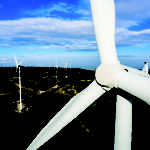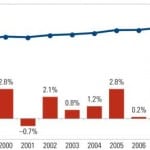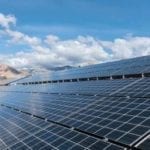The Federal Energy Regulatory Commission (FERC) is planning a technical conference this summer that would look at long-term impacts of the coronavirus pandemic on the energy industry. The discussion would look at how the industry should approach investments and infrastructure development should the trend of lessening demand for electricity, and oil and gas, continue.
Industry insiders who spoke with POWER said the pandemic is highlighting issues facing power generators and the energy industry in general as COVID-19 slows the U.S. and global economy.
FERC Chairman Neil Chatterjee, taking part in a May 8 webinar with former FERC Commissioner Tony Clark, now a senior advisor at the Wilkinson Barker Knauer law firm, said “We’ve been thinking a lot about how this pandemic may affect the industry going forward as we recover from the economic devastation that it has unleashed. We’re seeing decreased demand for electricity, for gas, for oil, but we don’t know yet if these are short-term issues or whether these trends will continue.”
Chatterjee said several topics could be discussed during a conference, including the impacts that changes to demand for electricity would have on power producers. Chatterjee said the coronavirus has highlighted the need to examine workforce issues, infrastructure development, and supply chains, all as part of long-term planning. He said the conference would likely be held in late June or early July, with several panels participating.
The COVID-19 pandemic has hit supply chains impacting both thermal and renewable generation, and some utilities have warned of impacts to their operations. The Tennessee Valley Authority (TVA) in a recent SEC filing said it could have problems obtaining coal for its power plants.
“We would likely address system operations and planning challenges with a discussion of the energy industry’s ongoing and potential future operational challenges due to COVID-19,” Chatterjee said. “I really want to get in front of these issues and think about how we respond in the coming months and, really, even in the coming years.”
Staffing, Generation Issues
Staffing issues at power plants have led some utilities to
defer maintenance; the Nuclear Regulatory Commission already
has adopted rules around maintenance and facility staffing. The issue has
been particularly acute for nuclear power plants, since
many schedule their refueling outages during the spring.
Lessening demand for power has led to the idling of some generation units. The TVA, while warning of coal supply disruptions, recently temporarily shut down its remaining six coal-fired power plants, instead relying on hydropower and renewables to handle much of the electricity demand across the seven states its serves in the U.S. Southeast.
TVA said it generated more power from renewables and hydropower than it did from coal during the three months of 2020, something that had not occurred since the 1950s. The utility still generates most of its power from nuclear resources, including 43% of its generation in the January-March period. It said it generated 12% of its power from coal during that time frame.
The U.S. Energy Information Administration on May 11 said coal-fired generation in the U.S. in 2019, prior to the pandemic, was at its lowest level since 1976, and is likely to fall even more this year.
“Investors should keep a watchful eye on the economic viability
of existing coal and natural gas assets. I would advise against investing in
new coal and oil assets for the time being,” Ken Pedotto, CEO of Solar Simplified,
told POWER. “They should be looking
to put their money in renewables, especially in projects that have market
offtake [to reduce the risk of offtake insolvency].”
Renewables Outpace Coal
The Institute for Energy Economics and Financial Analysis (IEEFA) on May 4 released a report in which it said it had reviewed government data from the U.S. Energy Information Administration on energy production across the United States and found electricity generated by renewable sources like solar, wind, and hydro exceeded coal-fired power in the U.S. for 40 straight days earlier this year, beginning March 25 through May 3.
The IEEFA said the longest previous continuous stretch for
that occurrence was nine days in 2019. The group said renewable generation
topped coal generation on 38 days in total last year. IEEFA in its report said
it is possible U.S. renewable power generation could exceed coal generation on
an annual basis for the first time this year—a year earlier than the group initially
forecast—if the lessening demand for power caused by the pandemic continues.
Miriam Tuerk, CEO and co-founder of Clear Blue Technologies, told POWER, “The renewable industry may benefit from government investments in infrastructure spend to assist a strong economic recovery. But in these times, the key will be to ensure that any investments have a very strong and compelling ROI [return on investment]. As such, investments should focus on technologies and companies that have a very strong economic return and low-cost solution. Fundamental economics will win the day.”
Finances at Forefront
Chatterjee said a FERC conference could look at cybersecurity,
along with financial issues, including liquidity, credit, and access to
capital. He said the group “would talk about the effect possible changes to
electric and natural gas demand would have on planning and infrastructure
development. I think we would explore how changes in energy usage could affect
both short term and long-term planning in energy infrastructure development.”
The FERC chairman said, “Topics on a panel like that would
likely include the electric sector response to changing demand patterns in day-to-day
operations, longer-term planning and infrastructure development.”
The chairman also said panelists “would discuss interrelated
issues potentially effecting the electric, gas and oil industries” with regard
to financial issues. “In particular, we’d like to think about ROE [return on
equity] issues from a longer-term perspective … 12 months, 18 months, 24
months from now … and consider appropriate returns when risk factors are
evolving. We’d also delve into the impact of risk factors on utility financial
metrics and credit ratings and the interdependencies of credit issues
associated with retail and wholesale.”
Tuerk said discussion of financial issues in the energy industry
should include a look at the most cost-effective ways to produce power moving
forward. “Likely many people, directly or indirectly, are too heavily invested
in legacy older oil and gas investments to shift toward renewables completely.
A more balanced or pro-renewables investment portfolio is what will drive
growth in the future. And when it comes to fossil fuels, cleaner technologies
should definitely be the emphasis. So,
more renewables, less fossil fuel. And
as for the fossil fuel portion, cleaner technologies, such as natural gas
versus coal, are key.”
—Darrell Proctor is associate editor for POWER (@DarrellProctor1, @POWERmagazine).










